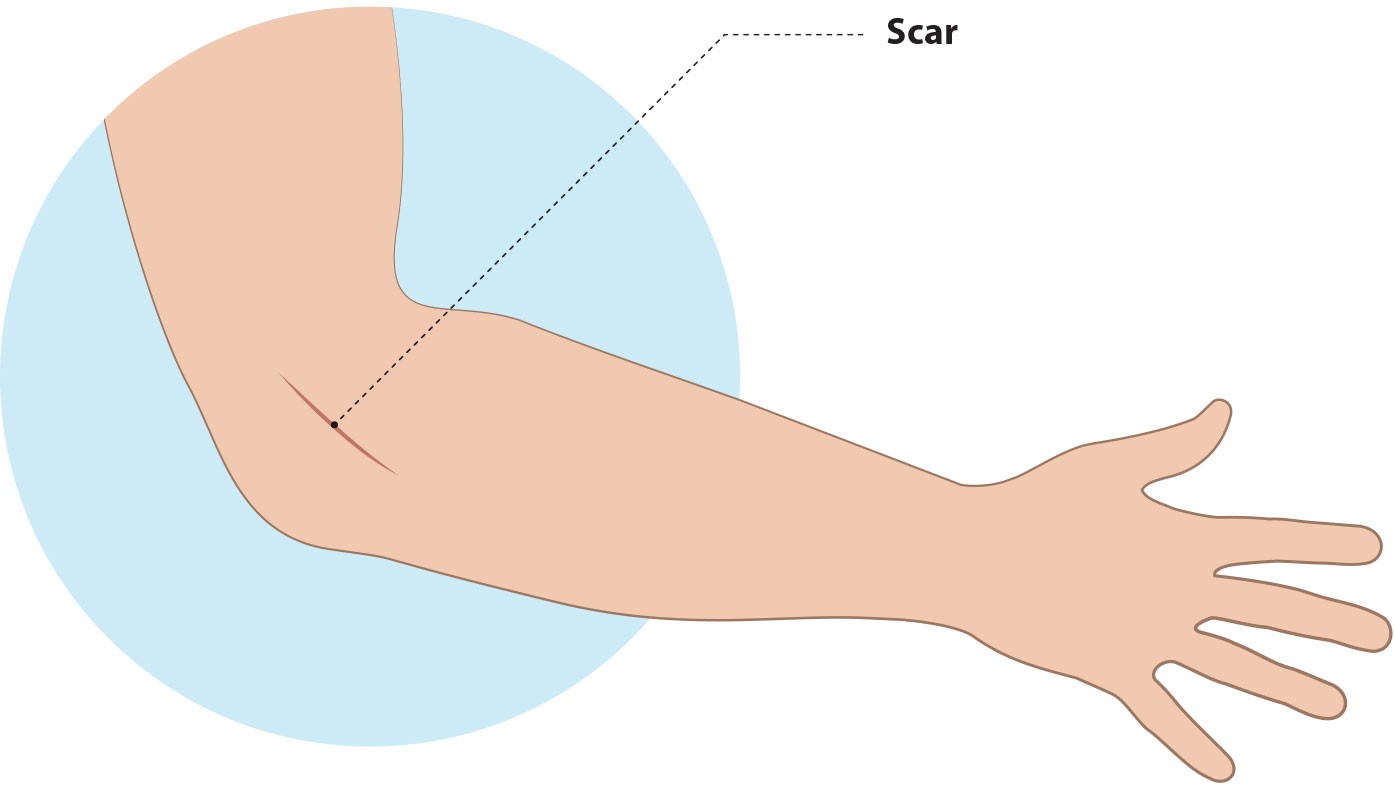Surgery
The evidence is compelling that OEE is a benign, self-limiting disease, so surgery is never necessary to recover. People often consider surgery when they are frustrated with how long it takes to feel better and when they become frustrated with other treatments. To avoid frustration, remember that we have not yet found a way to shorten the course of this condition, but it will go away.
If you do feel surgery is your best option, it can be done with a single small (about 2 inch) incision, or with several smaller incisions using an arthroscope. During surgery, a small piece of the ECRB attachment site is removed.

Figure: a scar.
Results
Unfortunately, the results of surgery are mixed and difficult to predict. Surgery helps about 75 out of every 100 people feel somewhat better, but most are not cured.
The results are worse in patients who relate their pain to their work and are using worker's insurance. It is also possible that patients feel beter silmply because something was done. This is known as the placebo effect. One small comparison of surgical treatment with simulated sugical treatment (placebo) showed no benefit to surgical treatment.7
Complications
As with every surgery, there are a few small risks that happen to less than 1 in 500 people having surgery.
Less than 1 out of every 1000 people having this surgery, will not be able to fully extent their arm afterwards.
Also you will need time to recover after surgery. It can take months, or even a full year, for the incision to feel better.8,9
Advantage
- You may feel like at least something is being done. But it's not clear if you'll actually recover more quickly. There is no clear advantage to surgery. One small study showed no difference between surgery and simulated (placebo) surgery.7
Disadvantages
- Small risks associated with surgery;
- Potentially lengthy recovery;
- Disappointment if the surgery does not fix the problem.